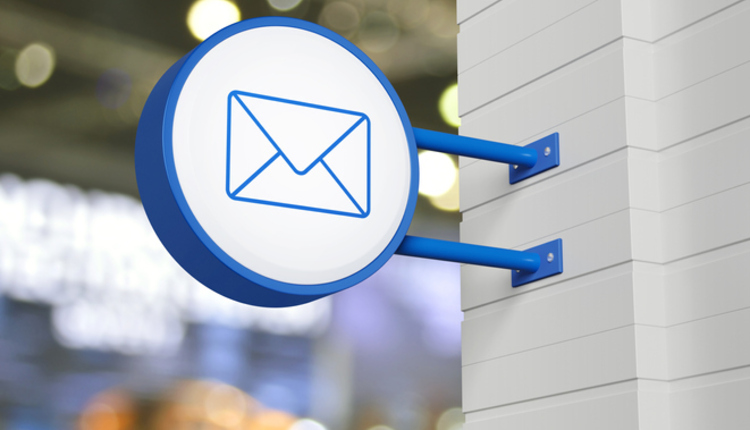Last fall, USPS announced that they it have has approved funding for the next phase of Informed Visibility. Informed Visibility, or IV, is an initiative to give mailers insight into how letters and flats are processed, and ultimately delivered.
Before IV, letter and flat mailers were able to get piece scan data through the USPS Confirm program, later renamed IMb Tracing. The piece level scans are available free for participants of Full-Service. These scans are generated as letters and flats are processed on automation equipment, a passive process. The data is then collected by the IMb Tracing program, and provisioned to customers as raw data within one to two days. This information can be used to infer the eventual delivery date of the mail, and identify processing issues within the mail stream. USPS actively uses this data to ensure that mail is meeting published service level agreements. However, significant gaps in data are likely when using IMb Tracing data alone. Pieces without an Intelligent Mail barcode, carrier route bundles and pieces in finely sorted containers are unlikely to receive scans through most of the mail network.
The first phase of Informed Visibility added additional layers of scanning information. Intelligent Mail tray and pallet barcodes are scanned throughout the mail stream, and this data, combined with the nesting information provided in electronic documentation, can be used to infer the location of each piece of mail in the early stages of mail processing, when it is still in the original container. Bundle scanning has recently been added, finally providing tracking information for carrier route bundles.
The Flaw in the Machine Many mailers are taking advantage of the data from IMb Tracing and Informed Visibility to monitor mail delivery, time follow-up events such as multi-media campaigns, and even pre-plan mail entry to create the most impactful mail experience for the end recipient. However, there are two crucial flaws in the current infrastructure that make the data less useful than in could be.
The first issue is with the final scan event. Currently, pieces get a final scan at the last piece of automation equipment available at their last sorting facility. This is usually at the local SCF, or at larger Delivery Units. Once this final automation pass is complete, the final scan indicates that the mail piece is "out for delivery." However, it can take up to 24 hours or more for the piece to be delivered, as the scan only indicates that the piece is on its way to the mail carrier. This makes timing follow-up activities such as reinforcing emails difficult.
The other, and much more troubling, issue with both IMb Tracing and IV is the data latency. It's unusual for mailers to get scan data for their mailings sooner than 24 hours, and 48-72 hours is the norm. With this latency, mailers get information about processing problems, mail piece movement and delivery information up to three days after the event itself. In a real-time world, it is difficult to react to such out-of-date data.
Enter Phase Two USPS has been tight-lipped about the actual features that will be available once phase 2 of IV is released, but it will be a significant upgrade to the system used today. Real-time data provisioning isn't achievable with the current system, so IV version 2 will likely re-write much of the current infrastructure. Mailers could receive scans within a half hour of the scan event, making tracking mail more actionable. In addition, there has been talk of additional processes to capture passive delivery scans as well.
Rather than have the carrier scan each piece as it is placed in the mailbox, Geo-Fencing has been proposed. With Geo-Fencing, various locations on each route could be equipped with a scan location, and as the carrier passes that location, mailers and USPS could infer that all mail slated before that location has been delivered for the day. New scanner technology is already being deployed to carriers for packages, which could be re-purposed to collect the passive scans for letters and flats. With enough scan locations for each carrier, mailers could receive a delivery notice for a mail piece within an hour, allowing them to trigger follow-up activities such as emails or phone campaigns.
Package Tracking Paves the Way With the growth in ecommerce and package volumes, USPS has spent a lot on improving its package tracking technologies, which has been received well by the public. There is still a lot to learn in this space, but the Postal Service is gaining market share due to its efforts.
By adding more value to the mail for letter and flat customers by improving the timeliness of the scan data, USPS could increase revenue and volume, drive adoption of advanced mail preparation like Full-Service, and stem the tide of electronic diversion. While details about IV are still murky, the potential of keeping mail relevant and actionable could be lucrative for both USPS and the industry.
Before IV, letter and flat mailers were able to get piece scan data through the USPS Confirm program, later renamed IMb Tracing. The piece level scans are available free for participants of Full-Service. These scans are generated as letters and flats are processed on automation equipment, a passive process. The data is then collected by the IMb Tracing program, and provisioned to customers as raw data within one to two days. This information can be used to infer the eventual delivery date of the mail, and identify processing issues within the mail stream. USPS actively uses this data to ensure that mail is meeting published service level agreements. However, significant gaps in data are likely when using IMb Tracing data alone. Pieces without an Intelligent Mail barcode, carrier route bundles and pieces in finely sorted containers are unlikely to receive scans through most of the mail network.
The first phase of Informed Visibility added additional layers of scanning information. Intelligent Mail tray and pallet barcodes are scanned throughout the mail stream, and this data, combined with the nesting information provided in electronic documentation, can be used to infer the location of each piece of mail in the early stages of mail processing, when it is still in the original container. Bundle scanning has recently been added, finally providing tracking information for carrier route bundles.
The Flaw in the Machine Many mailers are taking advantage of the data from IMb Tracing and Informed Visibility to monitor mail delivery, time follow-up events such as multi-media campaigns, and even pre-plan mail entry to create the most impactful mail experience for the end recipient. However, there are two crucial flaws in the current infrastructure that make the data less useful than in could be.
The first issue is with the final scan event. Currently, pieces get a final scan at the last piece of automation equipment available at their last sorting facility. This is usually at the local SCF, or at larger Delivery Units. Once this final automation pass is complete, the final scan indicates that the mail piece is "out for delivery." However, it can take up to 24 hours or more for the piece to be delivered, as the scan only indicates that the piece is on its way to the mail carrier. This makes timing follow-up activities such as reinforcing emails difficult.
The other, and much more troubling, issue with both IMb Tracing and IV is the data latency. It's unusual for mailers to get scan data for their mailings sooner than 24 hours, and 48-72 hours is the norm. With this latency, mailers get information about processing problems, mail piece movement and delivery information up to three days after the event itself. In a real-time world, it is difficult to react to such out-of-date data.
Enter Phase Two USPS has been tight-lipped about the actual features that will be available once phase 2 of IV is released, but it will be a significant upgrade to the system used today. Real-time data provisioning isn't achievable with the current system, so IV version 2 will likely re-write much of the current infrastructure. Mailers could receive scans within a half hour of the scan event, making tracking mail more actionable. In addition, there has been talk of additional processes to capture passive delivery scans as well.
Rather than have the carrier scan each piece as it is placed in the mailbox, Geo-Fencing has been proposed. With Geo-Fencing, various locations on each route could be equipped with a scan location, and as the carrier passes that location, mailers and USPS could infer that all mail slated before that location has been delivered for the day. New scanner technology is already being deployed to carriers for packages, which could be re-purposed to collect the passive scans for letters and flats. With enough scan locations for each carrier, mailers could receive a delivery notice for a mail piece within an hour, allowing them to trigger follow-up activities such as emails or phone campaigns.
Package Tracking Paves the Way With the growth in ecommerce and package volumes, USPS has spent a lot on improving its package tracking technologies, which has been received well by the public. There is still a lot to learn in this space, but the Postal Service is gaining market share due to its efforts.
By adding more value to the mail for letter and flat customers by improving the timeliness of the scan data, USPS could increase revenue and volume, drive adoption of advanced mail preparation like Full-Service, and stem the tide of electronic diversion. While details about IV are still murky, the potential of keeping mail relevant and actionable could be lucrative for both USPS and the industry.















